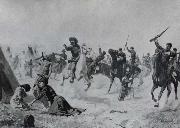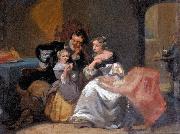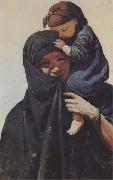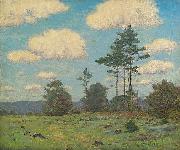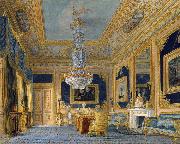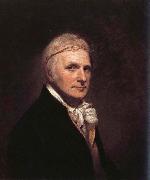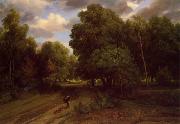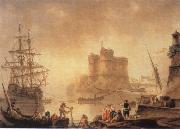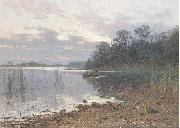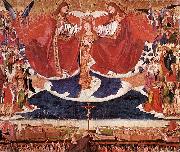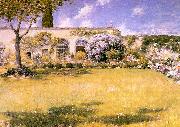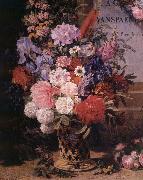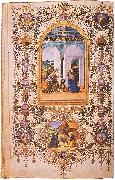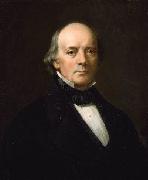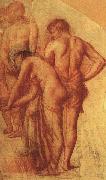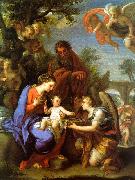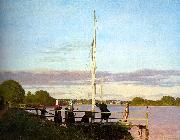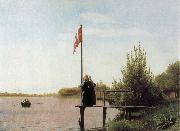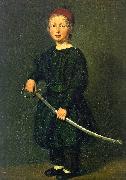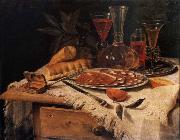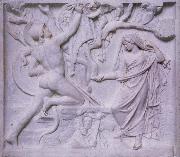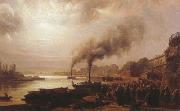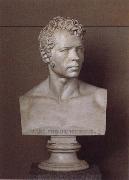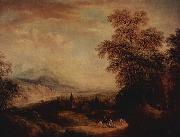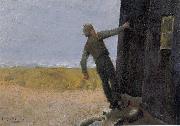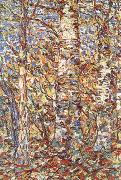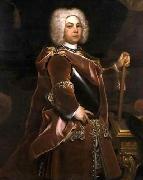|
|
|
|
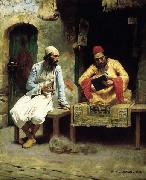 |
Charles Sprague Pearce
|
|
For other people named Charles Pearce, see Charles Pearce (disambiguation).
Charles Sprague Pearce (October 13, 1851 - May 18, 1914) was an American artist.
|
|
|
|
|
|
 |
Charles Van Beveren
|
|
Charles van Beveren, born at Mechlin in 1809, was instructed in the rudiments of art in the academy of his native city and at Antwerp. He settled in Amsterdam in 1830, subsequently visiting Paris, Rome, and other cities of Italy, and distinguished himself as a painter of history, genre, and portraits. He died at Amsterdam in 1850. The best known of his works are:
The Confession of a Sick Girl (in the Pinakothek at Munich).
Male Figure. A study (in the Rotterdam Museum).
The Vision of St. Ignatius.
The Death of St. Anthony of Padua (in the church of Moses and Aaron at Amsterdam, his chef-d'oeuvre). |
|
|
|
|
|
 |
Charles W. Bartlett
|
|
(born 1 June 1860 in Bridport, Dorset) was an English painter and printmaker. He studied metallurgy and worked in that field for several years. At age 23, he enrolled in the Royal Academy in London, where he studied painting and etching. After three years of study in London, he entered the private studio school Academie Julian in Paris, where he studied under Jules Joseph Lefebvre (1836-1911) and Gustave Boulanger (1824-1888).
In 1889, he returned to England and married Emily Tate, but shortly thereafter, his wife and infant son died in childbirth. Bartlett then traveled to Europe, spending several productive years in Holland, Brittany and Venice with his friend and fellow artist Frank Brangwyn (1867-1956). Brangwyn is believed to have introduced Bartlett to Japanese prints. Bartlett produced some of his most important early works on the Continent, especially studies of peasants painted in broad areas of color. He was invited to join the Societe Nationale des Beaux-Arts in France in 1897. In 1898, he returned to England and married Catherine Kate Main. |
|
|
|
 |
Charles Webster Hawthorne
|
|
(January 8, 1872 - November 29, 1930) was an American portrait and genre painter and a noted teacher who founded the Cape Cod School of Art in 1899.
He was born in Lodi, Illinois and his parents returned to Maine, raising him in the state where Charles' father was born. |
|
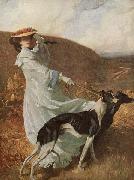 |
Charles Wellington Furse
|
|
(January 13, 1868 - October 16, 1904) was an English painter.
He was born at Staines, the son of the Rev. C. W. Furse, archdeacon of Westminster, and rector of St John's, Smith Square and descended collaterally from Sir Joshua Reynolds; and in his short span of life achieved such rare excellence as a portrait and figure painter that he forms an important link in the chain of British portraiture which extends from the time when Van Dyck was called to the court of Charles I into the 20th century.
His talent was precocious; at the age of seven he gave indications of it in a number of drawings illustrating Scott's novels. He entered the Slade School in 1884, winning the Slade scholarship in the following year, and completed his education at Julians Atelier in Paris. Hard worker as he was, his activity was frequently interrupted by spells of illness, for he had developed signs of consumption when he was still attending the Slade school. An important canvas called Cain was his first contribution (1888) to the Royal Academy, to the associateship of which he was elected in the year of his death. For some years before he had been a staunch supporter of the New English Art Club, to the exhibitions of which he was a regular contributor.
In October 1900 he married Katharine Symonds, the daughter of John Addington Symonds. She later became known as Dame Katharine Furse. The couple had 2 sons. His fondness for sport and of an open-air life found expression in his art and introduced a new, fresh and vigorous note into portraiture. There is never a suggestion of the studio or of the fatiguing pose in his portraits. The sitters appear unconscious of being painted, and are generally seen in the pursuit of their favourite outdoor sport or pastime, in the full enjoyment of life. Such are the Diana of the Uplands, the Lord Roberts and The Return from the Ride at the Tate Gallery; the four children in the Cubbing with the York and Ainsty, The Lilac Gown, Mr. and Mrs. Oliver Fishing and the portraits of Lord Charles Beresford and William Johnson Cory.
Most of these pictures, and indeed nearly all the work completed in the few years of Furse's activity, show a pronounced decorative tendency. His sense of space, composition and decorative design can best be judged by his admirable mural decorations for Liverpool town hall, executed between 1899 and 1902. A memorial exhibition of Furse's paintings and sketches was held at the Burlington Fine Arts Club in 1906.
|
|
|
|
|
|
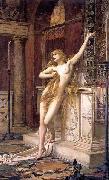 |
Charles William Mitchell
|
|
(1854 - 1903) was an English Pre-Raphaelite painter from Newcastle. A contemporary of John William Waterhouse, his work is similar in many ways. His one famous piece was Hypatia, shown in 1885 and likely inspired by the Charles Kingsley serialized novel Hypatia or New Foes with an Old Face. This painting is currently in the Laing Art Gallery. |
|
|
|
|
|
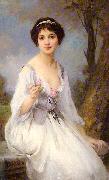 |
Charles-Amable Lenoir
|
|
(22 October 1860 - 1926) was a French painter. Like his mentor, William-Adolphe Bouguereau, he was an academic painter and painted realistic portraits as well as mythological and religious scenes. His artistic career was so prestigious that he won the Prix de Rome twice and was awarded the Legion d'honneur.
Lenoir was born in Châtellaillon, a small town just outside of La Rochelle. His mother was a seamstress and his father was a customs officer. When he was young, his father was reassigned and the family moved to Fouras. He did not start out in life as an artist, but instead began his education at a teachers' college in La Rochelle. Upon graduation, he worked as a teacher and supervisor at the lycee in Rochefort.
In August 1883 he was accepted into the École des Beaux-Arts de Paris, he also joined the Academie Julian where he was a student of William-Adolphe Bouguereau and Tony Robert-Fleury. Lenoir made his artistic debut at the Salon in 1887 and continued to exhibit there until his death. He was quickly noticed in the art world, and in 1889 won the Second Prix de Rome for his painting, Jesus et le paralytique (Jesus and a Sick Man with Palsy), and he won the First Prix de Rome the following year for Le Reniement de Saint Pierre (The Denial of St. Peter).His awards did not stop with the Prix de Rome; works shown at the Salons also won prizes, and he received a third-class medal in 1892 for Le Grenier a Vingt Ans (The Garret at twenty years) and a second-class medal in 1896 for La Mort de Sappho (The Death of Sappho). |
|
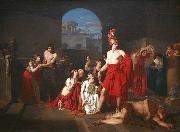 |
Charles-edouard Chaise
|
|
(1759, Paris - 1798, Fontainebleau) was a French neoclassical painter.
His father was a painter, art dealer and member of the Academie de Saint-Luc. Charles-Edouard studied under Jean Bonvoisin in 1775, then under Jean-Jacques Lagrenee, before winning second prize in the 1778 prix de Rome with David condemning to death the Amalekite bringing him Saul's diadem.
|
|
|
|
|
|
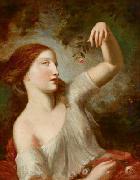 |
Charles-Joseph Natoire
|
|
(3 March 1700 - 23 August 1777) was a French painter in the Rococo manner, a pupil of François Lemoyne and director of the French Academy in Rome, 1751-1775. Considered during his lifetime the equal of François Boucher, he played a prominent role in the artistic life of France.
He is remembered above all for the series of the History of Psyche for Germain Boffrand's oval salon de la Princesse in the Hôtel de Soubise, Paris, and for the tapestry cartoons for the series of the History of Don Quixote, woven at the Beauvais tapestry manufacture, most of which are at the Château de Compiegne.
|
|
|
|
|
|
|
|
|
|
|
|
|
|
|
|
|
|
 |
Chigot Eugene
|
|
French history painter and marine specialist , 1860-1890
|
|
|
|
 |
Christen Dalsgaard
|
|
(October 30, 1824-February 11, 1907), Danish painter, was born on the Krabbesholm estate on the fjord near Skive, and was son of the estate owner, Jens Dalsgaard.
|
|
|
|
|
|
|
|
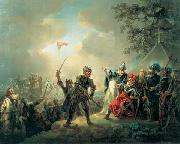 |
Christian August Lorentzen
|
|
(10 August 1749 - 8 May 1828) was a Danish painter. He was the instructor of Martinus Rørbye.
Christian August Lorentzen was born on 10 August 1749 as the son of a watchmaker. He arrived in Copenhagen around 1771 where he frequented the Royal Academy of Fine Arts but it is unclear whether he received formal training.From 1779 to 1782 he want abroad to develop his skills, visiting the Netherlands, Antwerp and Paris where he copied old masters. In 1792 he traveled to Norway to paint prospects.
In a number of painting, such as Slaget på Reden (1801, Danish Museum of National History and Den rædsomste nat (1807, Danish National Gallery, he documented key events from the English Wars between 1801 and 1814. Later in his career he mainly painted portraits, landscapes and scenes from Ludvig Holberg's comedies.
As a professor at the Royal Academy in Copenhagen from 1803 and until his death in 1828, he exercisized great influence on the next generation of painters such as Martinus Rørbye among others. |
|
|
|
|
|
 |
Christian Ernst Bernhard Morgenstern
|
|
(29 September 1805 - 12 Februar 1867) was a German landscape painter. Morgenstern is regarded as one of the pioneers in Germany of early Realism in painting. He gained this reputation in Hamburg 1826-1829 together with his contemporary Adolph Friedrich Vollmer while both were still studying; from 1830 onwards, Morgenstern, together with Friedrich Wasmann, Johan Christian Dahl and Adolph Menzel, introduced Munich to Realist painting.
Morgenstern was born in Hamburg as one of six children to a painter of miniatures, Johann Heinrich Morgenstern (1769-1813). After the early death of his father he was placed as an apprentice in the graphic workshop of the brothers Suhr. Cornelius Suhr took the young Morgenstern as his servant on a two-year journey through Germany to publicise the panorama prints which the brothers Suhr produced. 1822 followed another long journey to St. Petersburg, where they stayed for a year and to Moscow. On their return to Hamburg Morgenstern succeeded in leaving Suhr (Vollmer took his place). He became a student of the Hamburg painter Siegfried Bendixen with whom he stayed from 1824 to 1827, then continued his studies at the Royal Danish Academy of Fine Arts in Copenhagen (1827-1828) and undertook study journeys through Sweden and Norway. Bendixen introduced him to the wealthy aristocrat and supporter of the arts, Carl Friedrich von Rumohr, patron to many young Hamburg artists, on whose estate in Holstein he spent several summers. In 1830 Morgenstern went to Munich on Ruhmor's advice. He settled there permanently while undertaking extensive yearly study trips: for the first years through Bavaria, then in the summer of 1836 and in the following summers to the Alsace as guest of a patron of the arts. The winter 1839/40 he returned to Hamburg to stay with his mother. In 1841 he visited Venice and Trieste together with the landscape painter Eduard Schleich and in 1843, and again in 1846 the central Alps. In the summer of 1850 he stayed on Heligoland. |
|
|
|
|
|
|
|
|
|
 |
Christian Gullager
|
|
Christian Gullager (1759-1826) was an artist specializing in portraits and theatrical scenery in the late 18th century; he worked in Boston, Massachusetts, New York, and Philadelphia. Born in Copenhagen, he trained at the Royal Danish Academy of Fine Arts. In America, portrait subjects included president George Washington. He designed scenery for Boston's Federal Street Theatre. |
|
|
|
 |
Christian Mali
|
|
painted Magd mit Kuhen an der Tranke am See an einem sonnigen Fruhlingsmorgen, Munchen in 1880 |
|
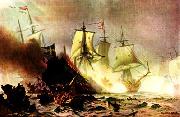 |
Christian Molsted
|
|
(1862-1930) was a Danish artist who specialized in marine painting. He is best known for his painting of the frigate Niels Juel during the Battle of Helgoland on 9 May 1864.
Born in Dragør on 15 October 1862, Mølsted was the son of fisherman Andreas Adolf Nikolaj Mølsted and Ane Hans-Nielsdatter. With financial support from a relative, he completed his school education in Copenhagen at Det tekniske Selskab where he graduated in 1879. After sailing to Madeira that summer on the frigate Jylland, he entered the Danish Academy in October 1880 with mentors such as Frederik Vermehren, Jorgen Roed, Julius Exner and Carl Bloch. During his studies, Mølsted travelled to Paris and London where he was able to observe contemporary art. He graduated from the Academy with a painting diploma in January 1885. He first exhibited in December 1884 and thereafter at the spring exhibitions. In 1889, he was awarded the Neuhausen Prize for his Skibe i Havnen ved Larsens Plads. His subjects are for the most part taken from the coasts around Copenhagen or in Jutland. Among the artist favorite subjects were the heroic battles of captains Tordenskjold and Willemoes. Historical details, as well as detailed information about the ships, was provided for the paintings by Otto Dorge, a Dragør local expert. Later in life, he also made genre paintings. Mølsted's works were widely appreciated for his perfectionist approach, his attention to historical detail and his ability to bring things to life. He died on 10 May 1930 in Dragør. |
|
|
|
|
|
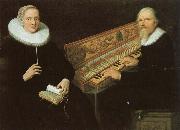 |
christian schubart
|
|
German poet,writer on music and composer. A distinguished keyboard player, he served at the Werttemberg court, 1769-73, then worked in Augsburg and Ulm. After imprisonment, 1777-87 (for insulting a duke's mistress), he became court and theatre poet at Stuttgart. As a composer he was best known for his lieder. His writings, including an important work on musical aesthetics (1806) and essays in his own periodical, stress expression in music. His poetry was often set; Schubert's four settings include Die Forelle and An meine Klavier.
|
|







